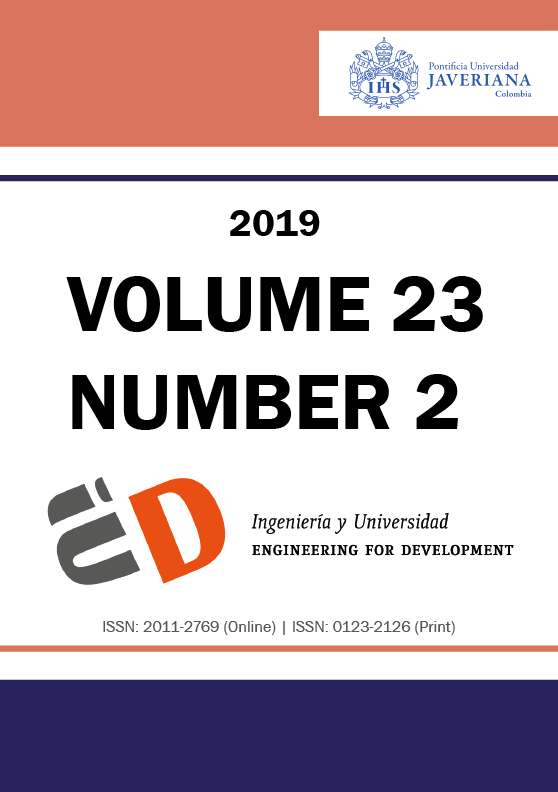Impact of substrates on the electrical properties of thin chromium films
##plugins.themes.bootstrap3.article.details##
Objective: We studied the impact of substrates on the electrical properties of thin chromium films. Substrates may serve many purposes, such as to define orientation, to conduct electrical current in vertical devices, as a gate in transistors, etc. The thickness range of the chromium films grown on both substrates was (3.5-70) nm. Methods and materials: We used Fuchs-Sondheimer(FS) and Mayadas-Shatzkes(MS) theories to analyze electrical resistivity data for chromium(Cr) films grown on both substrates simultaneously by thermal evaporation in vacuum, under identical deposition conditions. Results and discussion: The infinitely thick film resistivity (ρ0), conduction electron mean free path(l), specularity parameter(p), scattering power of the grain boundary(α') and grain boundary reflection coefficient(R') were found to depend upon the nature of the substrate and the binding force between them and evaporated chromium atoms. The growth and microstructure of the chromium films were examined using atomic force microscopy (AFM) and scanning electron microscopy (SEM). Conclusions: Our experimental data exactly fits with the MS theory in the entire thickness range grown for the chromium films deposited on both the substrates. Examination of film structure by SEM indicated that the films consist of grains of relatively pure chromium of different sizes, and depends upon deposition conditions and parameters, which are important factors that dictate the structural properties of the films.
Thin chromium films, substrates, resistivity, grain boundary, reflection coefficient, microstructuremicroscopía de fuerza atómica, coeficiente de reflexión del borde de grano, microscopía electrónica de barrido, sustratos, resistividad, películas delgadas de cromo
[2] S. J. Ikhmayies, N. M. Abu El-Haija, and N. Ahmad-BitarRiyad, “Electrical and optical properties of ZnO:Al thin films prepared by the spray pyrolysis technique,” Physica Scripta, vol. 81, no. 1, 015703, 2010. Available: https://iopscience.iop.org/article/10.1088/0031-8949/81/01/015703.
[3] D. J. Ranir, A. Guru Sampath Kumar, and T. Subba Rao, “Substrate temperature-dependent physical properties of nanocrystalline zirconium titanate tin films,” J. Coatings Techn. Res., vol. 14, no. 5, pp. 971–980, 2017.
[4] S. A. Jassim, A. A. R. A. Zumaila, and G. A. A. Waly, “Influence of substrate temperature on the structural, optical and electrical properties of CdS thin films deposited by thermal evaporation,” Results Phys., vol. 3, pp. 173–178, 2013. Available: https://doi.org/10.1016/j.rinp.2013.08.003.
[5] F. A. Mir, M. Ikram, and Ravi Kumar, “Impact of substrate on some physical properties of PrFe0.5Ni0.5O3 thin films,” Solid State Sci., vol. 13, no. 11, pp. 1994–1999, 2011. Available: https://doi.org/10.1016/j.solidstatesciences.2011.09.001
[6] M. Cao et al., “Influence of substrates on the structural and optical properties of ammonia-free chemically deposited CdS films,” J. Alloys Compounds, vol. 530, pp. 81–84, 2012. Available: https://doi.org/10.1016/j.jallcom.2012.03.054
[7] J. K. Ros et al., “The effect of substrate roughness on the surface structure of TiO2, SiO2, and doped thin films prepared by the sol-gel method,” Acta Bioeng. Biomech., vol. 11, no. 2, pp. 1–9, 2009. Available: http://www.actabio.pwr.wroc.pl/Vol11No2/3.pdf
[8] M. A. Angadi and L. A. Udachan, “The effect of the deposition rate on the electrical resistivity of thin tin films,” Thin Solid Films, vol. 78, no. 3, pp. 299–302, 1981. Available: https://doi.org/10.1016/0040-6090(89)90597-X
[9] M. A. Angadi and L. A. Udachan, “Influence of DC electric field on sheet resistance of thin tin and chromium films,” J. Phys. D Appl. Phys., vol. 14, no. 5, pp. L81, 1981, https://iopscience.iop.org/issue/0022-3727/14/5
[10] Ch. Kittel, Introduction to Solid State Physics. New Delhi: Wiley India Pvt. Ltd., 2010.
[11] K. Fuchs, “Electrical resistance in thin metal films,” Proc. Cambr. Philo. Soc., vol. 34, no. 1, pp. 100–193, 1938.
[12] D. C. Larson, Physics of Thin Films, vol. 6, M. H. Francombe and R. W. Hoffmann, Eds. New York, NY, USA: Academic Press, 1971.
[13] E. H. Sondheimer, “The influence of a transverse magnetic field on the conductivity of thin metallic films,” Phys. Rev., vol. 80, no. 3, pp. 401–406, 1950. doi:10.1103/PhysRev.80.401
[14] A. F. Mayadas and M. Shatzkes, “Electrical-resistivity model for polycrystalline films: The case of arbitrary reflection at external surfaces,” Phys. Rev. B, vol. 1, no. 4, pp. 1382–1389, 1970. Available: https://doi.org/10.1103/physrevb.1.1382
[15] M. K. Thakur et al., “Effect of substrate on the structural and electrical properties of Mo thin films,” Adv. Mater. Lett., vol. 7, no. 7, pp. 525–528, 2016. doi: 10.5185/amlett.2016.5965
[16] G. N. Chavan, P. B. Belavi, L. R. Naik, V. L. Mathe, and R. K. Kotnala, “Resistivity and grain size dependent magnetoelectric effect in (Y) Ni0.85Cd0.1Cu0.05Fe2O4 + (1-Y) Batio3 ME composites,” Int. J. Sci. Techn. Res., vol. 2, no. 12, pp. 298–306, 2013. Available: http://www.ijstr.org/final-print/dec2013/Resistivity-And-Grain-Size-Dependent-Magnetoelectric-Effect-In-Y-Ni0.85cd0.1cu0.05fe2o4-+-1-y-Batio3-Me-Composites.pdf
[17] H. L. Pushpalatha, S. Bellappa, T. R. Narayanaswamy, and R. Ganesha, “Structural and optical properties of CdS thin film obtained by chemical bath deposition and effect of annealing,” Indian J. Appl. Phys., vol. 52, no. 08, pp. 545–549, 2014. Available: https://pdfs.semanticscholar.org/96a0/4cdc5cae8ec4dc77936869eedc99cdfac867.pdf
[18] Handbook of Physics and Chemistry, 54 ed. Cleveland, Ohio, USA: Chemical Rubber Company Press.
[19] S. M. Shivaprasad, L. A. Udachan, and M. A. Angadi, “Electrical resistivity of thin palladium films,” Phys. Lett., vol. 78A, no. 2, pp. 187–188, 1980. Available: https://doi.org/10.1016/0375-9601(80)90693-3
[20] J. Kumar and O. N. Srivastava, “Electrical resistivity of thin films of samarium,” Thin Solid Films, vol. 13, no. 2, pp. S29–S33, 1972. Available: https://doi.org/10.1016/0040-6090(72)90323-9
[21] S. M. Shivaprasad, M. A. Angadi, and L. A. Udachan, “Temperature coefficient of resistance of thin manganese films,” Thin Solid Films, vol 71, no. 1, pp. L1–L4, 1980. Available: https://doi.org/10.1016/0040-6090(80)90170-4
[22] P. V. Ashrit, S. M. Shivaprasad, and M. A. Angadi, “Electrical resistivity of thin Yttrium films,” Thin Solid Films, vol. 72, pp. L5–L6, 1980.
[23] P. V. Ashrit and M. A. Angadi, “Electrical properties of thin ytterbium films,” Phys. Status Solid., vol. 63, p. K77, 1981. doi: 10.1002/pssa.2210630168
[24] M. A. Angadi and L. A. Udachan, “The effect of the deposition rate on the electrical resistivity of thin tin films,” Thin Solid Films, vol. 78, pp. 299–302, 1980. Available: https://doi.org/10.1016/0040-6090(89)90597-X
[25] S. K. Bandyopadhyay and A. K. Pal, “The effect of grain boundary scattering on the electron transport of aluminium films,” J. Phys. D Appl. Phys., vol. 12, no. 6, pp. 953–960, 1979. Available: https://doi.org/10.1088/0022-3727/12/6/018


